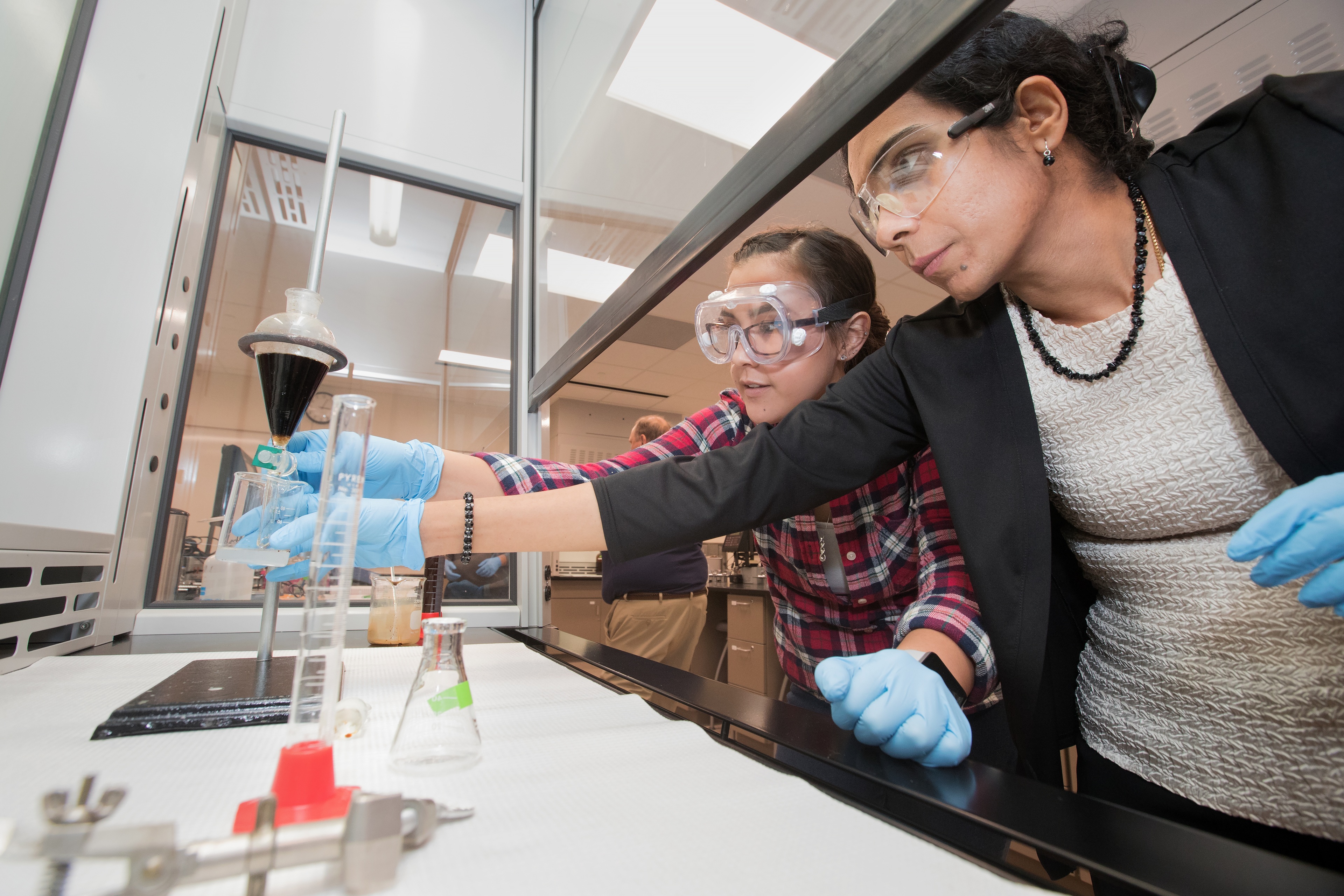
BGSU Firelands receives a $35K grant to enhance environmental science education in high schools
The project aims to enable students with increased knowledge of watersheds and the environment
By Patrick Pfanner
Water quality continues to be vital to the health and economic well-being of the state and region and researchers at Bowling Green State University Firelands are leading a renewed effort to study and highlight its importance to high school students.
BGSU Firelands was recently awarded a $35,000 grant from the Ohio Environmental Protection Agency to enhance environmental science education in high schools through watershed monitoring.
The grant will support a project in which Perkins High School, Huron High School and BGSU chemistry students at the Huron campus will monitor water quality in Sawmill Creek and Pipe Creek, two Lake Erie tributaries.
“This initiative will serve as part of the BGSU commitment to being a public university for the public good,” said Dr. Subhalakshmi Nagarajan, an associate teaching professor of chemistry at the Huron campus who pursued the grant this spring. “This is an opportunity to apply the scientific knowledge and research expertise at BGSU Firelands in a way that directly benefits the local community. By monitoring the local streams that feed into Lake Erie, we develop a deeper understanding of the factors that affect the water quality.”
Responsibility and curiosity
During the project,100 high school students in Erie County will participate in watershed monitoring programs with BGSU Firelands students serving as peer mentors.
"The partnership is fantastic,” said Dr. Julie Lenner-McDonald, assistant superintendent of academic affairs for Huron City Schools. "It allows us to expose students to impactful work where they are contributing to their community. It also exposes students to a variety of careers associated with the sciences. This is important as students are identifying potential fields of study and career paths post-graduation.”
Nagarajan wants to empower students to apply chemistry principles and increase their understanding of watersheds and their impacts on the environment. Students will learn how to collect, analyze and communicate data on water quality. The data will be integrated into a statewide online data-sharing platform.
“This research project exemplifies the essence of science education, which is the ability to apply theoretical concepts taught in the classroom to solve problems in the real world," said Dr. Ram Veerapaneni, interim dean of BGSU Firelands and department chair of Natural and Social Sciences. "Dr. Nagarajan’s project will equip students with the tools and knowledge to monitor water quality and cultivate scientific curiosity while instilling a sense of responsibility towards our natural resources."
A collaboration among BGSU Firelands, Firelands Coastal Tributaries (FTC) and Cleveland Water Alliance (CWA) will provide a network of monitoring programs to assist Nagarajan in the standardization of testing protocols by sharing best practices, said Max Herzog, the Cleveland Water Alliance project manager.
“Over the past few years, the Cleveland Water Alliance has deployed hundreds of sensors throughout thousands of miles of telecommunications coverage, establishing Lake Erie as the largest digitally connected freshwater body in the world, but there will always be gaps in that data,” Herzog said. “The fact that people care about our water resources deeply enough to volunteer their time to fill these gaps is a truly invaluable asset. Ultimately, communities have to be part of the solution if we are going to steward our natural resources and grow our water economy. With this OEEF-funded project, we are tremendously excited to work with BGSU Firelands and the Firelands Coastal Tributaries Watershed Program to expand this work into the classroom in Erie County.”
Herzog said Firelands Coastal Tributaries has long been one of the network's strongest champions, and noted BGSU brings essential expertise and community connections to the collaboration.
“Together, we will be able to develop a new paradigm for collecting actionable data while empowering youth with environmental STEM skills and stewardship experiences,” Herzog said. “I am hopeful that this paradigm will be able to scale its impact across the network in the future.”
Building on past success
The high school students will use a test validated in-house by undergraduate student researchers working with Nagarajan and published in a peer-reviewed journal.
The project will build on previous research conducted by Nagarajan and her colleagues on Old Woman Creek in 2019. Nagarajan focused her work then on the role wetlands play in limiting nitrogen and phosphorous content in waterways with a $20,000 grant to enhance teaching and research activities in water quality.
Students will sample water throughout the year, as the water quality is expected to vary based on the seasons, agricultural practices and other factors. The students will then create a grade for each watershed based on the data they collect, and then choose a way to communicate their findings to the public.
Nagarajan hopes the project will inspire more students to pursue careers in environmental science and chemistry, as well as increase awareness of and involvement in protecting their local water resources. She also expects the project to continue beyond the duration of the grant, as she plans to involve more schools and students in the future.
“I sincerely believe this is an important step towards preserving this invaluable resource for future generations,” Nagarajan said. “Inspiring scientific curiosity in K-12 students is something I’m passionate about, and I am excited to partner with our local schools to establish this monitoring effort.”
Related Stories
Media Contact | Michael Bratton | mbratto@bgsu.edu | 419-372-6349
Updated: 08/30/2023 10:55AM




